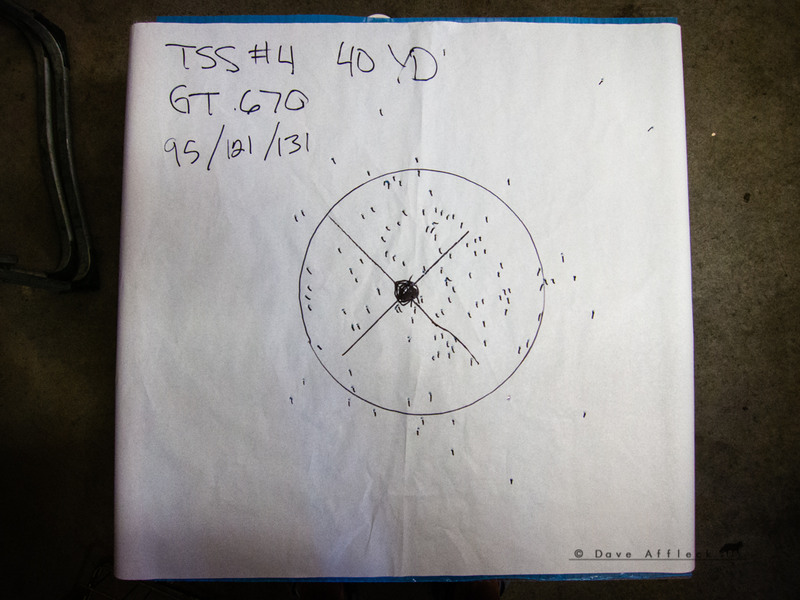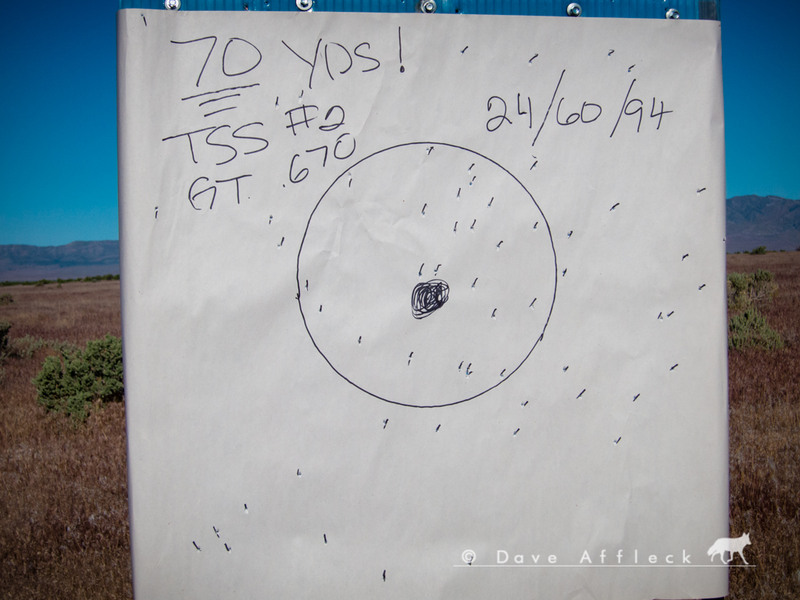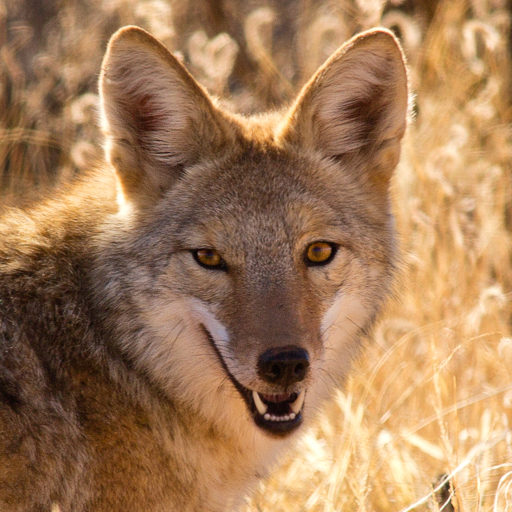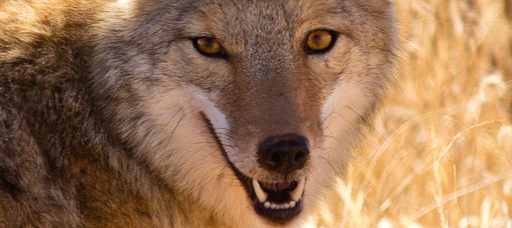What is TSS shot and what makes it so special for coyote hunting
Density
TSS stands for Tungsten Super Shot. While quality and specs may vary by individual supplier, the “good stuff”, the only TSS we are interested in, is a full 18g/cc density, comprised of very round, polished pellets of very uniform dimension.
The tremendous density of TSS shot is the main ingredient of the secret sauce that make TSS so incredibly effective. The density of lead is 11.3g/cc, TSS shot is 60% more dense than lead. Hevi-shot? Hevi-shot is only 12g/cc, slightly more dense than lead, but TSS is still 50% more dense than Hevi-shot.

To illustrate the importance of density in penetration and energy downrange, consider a tennis ball and a baseball both starting out at 90 MPH. If you are standing 100 feet away, I bet you’d rather get hit by the tennis ball! In the same way, the massive density of TSS compared to other shot materials means that it maintains more velocity and energy downrange to hit harder and penetrate deeper than any other type of shot.
Hardness
Hardness is another ingredient of the TSS secret sauce. Tungsten is harder than steel. I don’t know the certified hardness of TSS shot, but the examples I have worked with so far are very hard indeed. I can just barely put a mark on a piece of TSS #2 with a standard size pair of slip joint pliers with fairly sharp jaw serrations. By contrast, I can easily smash a lead pellet flat as a pancake.
The most obvious benefit of that hardness for the shotgun coyote hunter is in deeper penetration, breaking bone and breaking down a coyote. Where a lead pellet will tend to flatten out against a bone, a TSS pellet will blast right on through and break the bone. In my own penetration testing I saw very convincing evidence that the more a pellet was deformed upon impact the less it penetrated. In penetration testing with TSS shot, the recovered pellets looked like they hadn’t even been fired. In the same penetration testing, recovered Hevi-shot and lead pellets were badly deformed – but the ones that stayed the most round, were the ones that penetrated the deepest in the tests. The hardness of TSS shot helps bolster the penetration advantage of the density. Win-win.
Pellet count
Pellet count is a major ingredient of the TSS secret sauce. If two different shotgun loads both have the same penetration on coyote, would you rather have 5 pellets hit the coyote or have 20 pellets hit the coyote? Of course you’d rather have 20! The penetration of TSS is much better than lead. You can typically get away with using up to four sizes smaller shot with TSS compared to lead and still get at least equal, if not deeper penetration. As an example, in my testing I’ve found that TSS #2 penetrates deeper than #4 Buck. A 1-7/8 oz. load of #4 Buck has 41 pellets. A 1-5/8 oz load of TSS #2 has 94 pellets. Being able to use a 94 pellet payload with equal or better penetration than a 41 pellet payload is a huge advantage! Depending on what kind of pattern you decide to use, you can either put more than twice as many pellet strikes on every coyote you hit, or you can make your pattern twice as big and still maintain the same number of pellet strikes anywhere within that pattern.

A much higher pellet count provides a tremendous advantage in effectiveness that you can choose how you want to use.
Patterns
I have seen TSS produce the tightest, most round, most even patterns I have ever seen in my life. I am talking very specifically about shotgun shells for hunting coyote here. The patterns I’ve been getting with TSS are so much better than anything I have ever seen with any other coyote load it’s almost unreal. Especially at 50 and 60 yards.

I believe several factors contribute to the stellar patterns TSS consistently produces. The uniform size, the roundness, the density. I also think that because it is so hard, the resistance to set back pellet deformation upon firing also plays a role.

Whatever the reasons are, the patterns speak for themselves and the TSS coyote load patterns are rather amazing.
So, there you have it, the ingredients of the TSS shot secret sauce!
-DAA



Dave awesome articles with the shotgun testing! I’m looking at loading my own shotgun loads for a more consistent and better performance for coyote hunting in the 40-60 yard range and the more I read about TSS I think I might have found the perfect shot. With that said I know you cant give out the load data, but could you possibly share what wad was used and why? Something I’ve had a hard time finding good info on is wad selection and how to tune it for a specific application
Thanks Dalton.
I’m using a standard B&P steel shot wad, simply because that’s what the load data I got specified and it has been working great so no reason to mess with it.
Dave
With it being harder than steel, are you seeing any problems running the TSS shot through a turkey choke? i.e. the .670 GT
Great article!
I haven’t had any issues with the tight chokes and TSS, yet. That said, Kick’s says they won’t warranty a GT choke using TSS. So, if it does harm the choke, I’m out of luck. Other choke makers say they will warranty and TSS is no problem.
Hard to say at this point if TSS is eventually going to harm my chokes or not. I have shot enough of it, that I can at least say, it’s going to take a lot of shooting before it does, if it does. But I guess I won’t be too awful surprised if it eventually does some harm either.
Eventually I’d like to try some Trulock chokes, he’ll cover them using TSS. So will some of the other high end makers. Kicks says they won’t though.
This is awesome. I live in a state where we are limited to #2 shot on state owned land. TSS is clearly the answer to this dilemma. That being said, I am very new to TSS. Where is the best place to purchase quality shot (a quick google seems to reveal many sketchy suppliers)? Also, where is the best place to get load data?
Thanks for your awesome work.
I got my TSS and my data from Hal Abbot. You can get ahold of him at [email protected]
Great research! I typically kill over 100 dogs a year here in Idaho, probably half with a shotgun and this will change my game dramatically. Can I ask where you source the shot. I understand that it is not all equal. I would be interested in splitting bulk if the opportunity is there. Thanks
Thanks Zach! I got most of my TSS from Hal Abbot, [email protected].
DAA
I recently got my #2 tss and loaded up some 2 3/4 1 5/8 oz loads per Hal. I’m using them in a win sx3 with the kicks gt 670. Results were ok but not nearly what you are getting. 17 pellets in 10” at 50. I’m doing a fold crimp. Any suggestions?
Zach, I do a fold crimp on mine too, just for whatever that is worth.
I think you just need to try a different choke. I have learned that shotguns are just about the least predictable, most picky things on earth next to women. If .670 isn’t working well, I would go with less restriction. Try the full or even the modified chokes that came with your SX3.
That said. 17 of those mean little pellets in 10″ is still a dead coyote!
Let me know how it goes!
Well if it’s as fussy as my wife I’m done! Thanks for the help. I will keep you posted.
So I found a problem. The buffer for the load is leaking around the ward and contaminating the powder causing misfires and slow burn. How do you keep the buffer from leaking.
Are you using a mylar wrap Zach? I do, and it keeps the buffer from being able to leak out the slits in the wad.
Does Mr. Hal provide you with instructions on how to load the shot, or do you have to specifically request it?
If I recall, I specifically requested it.